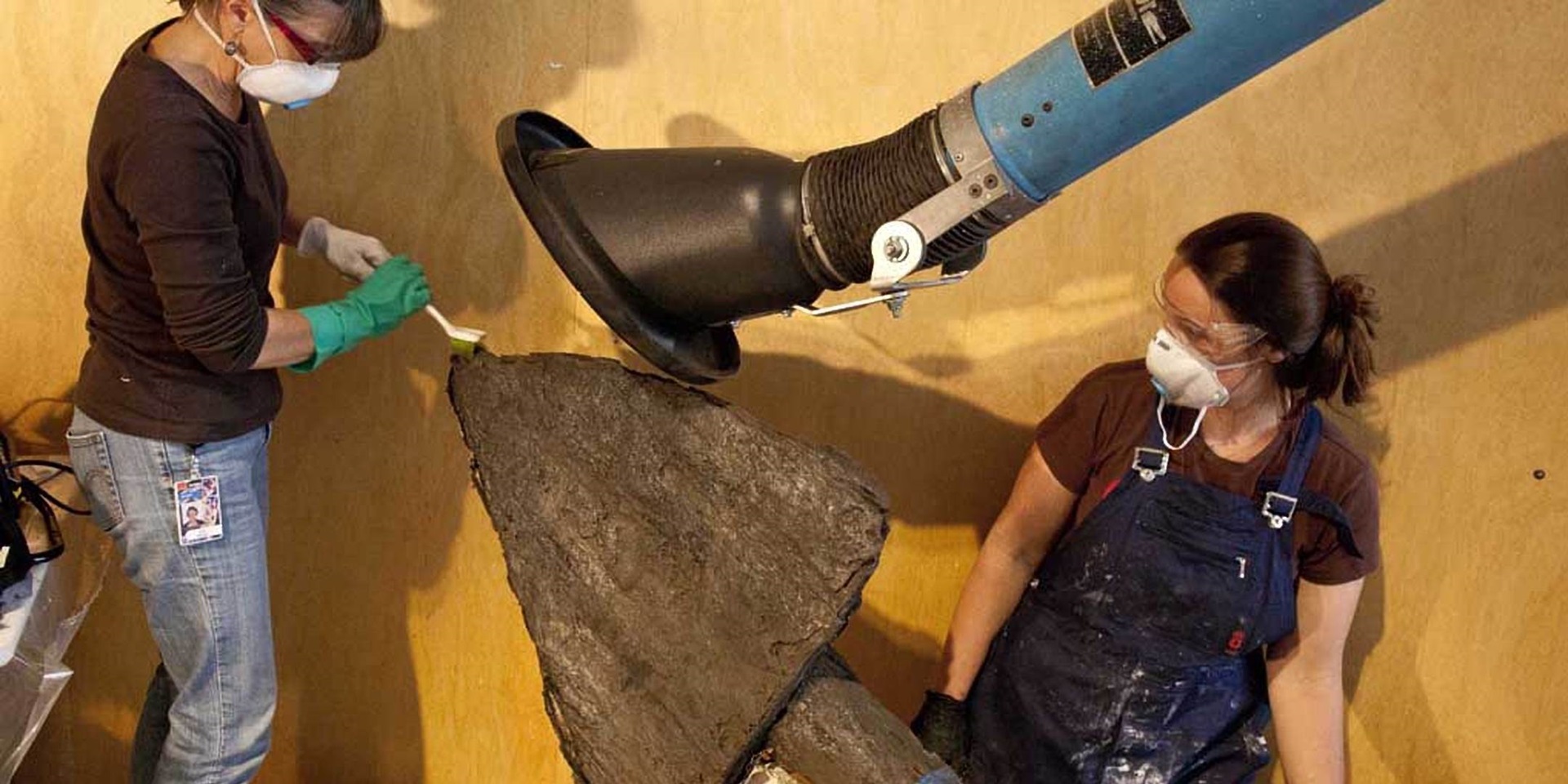Working to the highest standards including examination, treatment, research, documentation and training, the team makes sure that present and future visitors can learn, appreciate and enjoy our wonderful collection.
WHAT IS CONSERVATION?
Conservation aims to reduce damage and loss of our cultural heritage. Conservation:
- minimises changes to our collection and objects on loan to us
- protects these precious objects from the climate
- slows down physical and chemical deterioration
Conservators use 'minimal intervention' methods, aiming to stabilise the object (chemically and physically) and keep its original material. They meticulously document its condition and treatment in reports and photographs. This information is useful for the object's long-term conservation.
When treating an object, a conservator must respect its integrity, working with materials that age well and, if possible, using reversible techniques.
MEET OUR CONSERVATORS
The museum has four specialist conservators. They are experts in conservation management, and the conservation of paper, photographic material, textiles, wooden, metal and composite objects, mixed collections and preventive conservation.
We also fortunate to have four dedicated volunteers - some have been working with the conservation team for many years. Each brings distinct and highly regarded skills and abilities to their work with us.
See a restoration of a historic picture frame, including putty made in the traditional way. Follow our Conservation blog.
TYPES OF CONSERVATION
Remedial conservation
Occasionally an item is in such fragile condition or deteriorating at such a rate, that it could be lost in a relatively short time. Remedial conservation arrests the damaging processes or reinforces the item's structure. This action sometimes modifies the item's appearance. Examples of remedial conservation are:
- disinfestation of a textile
- desalination of ceramics
- deacidification of paper
- dehydration of a wet archaeological material
- stabilisation of corroded metal
Preventive conservation
This 'hands off' conservation doesn't interfere with the object or change its appearance. Preventive measures aim to stop deterioration and loss. Examples of preventive conservation include:
- storage, handling, packing and transportation
- environmental management (light, humidity, pollution and pest control)
- emergency planning
- education of staff
- public awareness.
Restoration
Restoration only occurs when an item has lost part of its significance or function through past alteration or deterioration. In this case, we may restore the item with an eye to aiding its appreciation, understanding and use. Restoration is based on respect for the original material and usually modifies the item's appearance. Examples of restoration include:
- retouching a painting
- reassembling a broken sculpture
- reshaping a basket
- filling losses on a glass vessel.
Professional practice
The Conservation team at the ANMM preserves and presents the museum's collection with respect for the integrity of each object. We are directly responsible for developing protocols and procedures for the conservation, display, care and handling of the museum's collection. Our staff strives to provide the highest standards in all aspects of conservation (including examination, treatment, research, documentation and training), so that present and future visitors may learn, appreciate and enjoy our wonderful collection.
Caring for the Collection
The Australian National Maritime Museum's registration and photography department looks after the museum's collection and object loans.
The role of this team also includes storage, freight, internal object movement, inventory control and the valuation program. They also assist with exhibition development and installation and help manage the museum’s digitisation program and collections and exhibitions database.
- There are about 140,000 items in the museum's collection and without this department the artefacts would be inaccessible - physically and intellectually.
- The photography studio produces original photography for collection identification and control, exhibition graphics, publications and promotion. It also manages the museum's large digital photographic library.
- The department's staff holds relevant tertiary and post graduate qualifications and is skilled in the various aspects of collection management, information management and photography. Some staff members are skilled operators of heavy lifting equipment and hold appropriate certificates in this field.
Useful downloads
